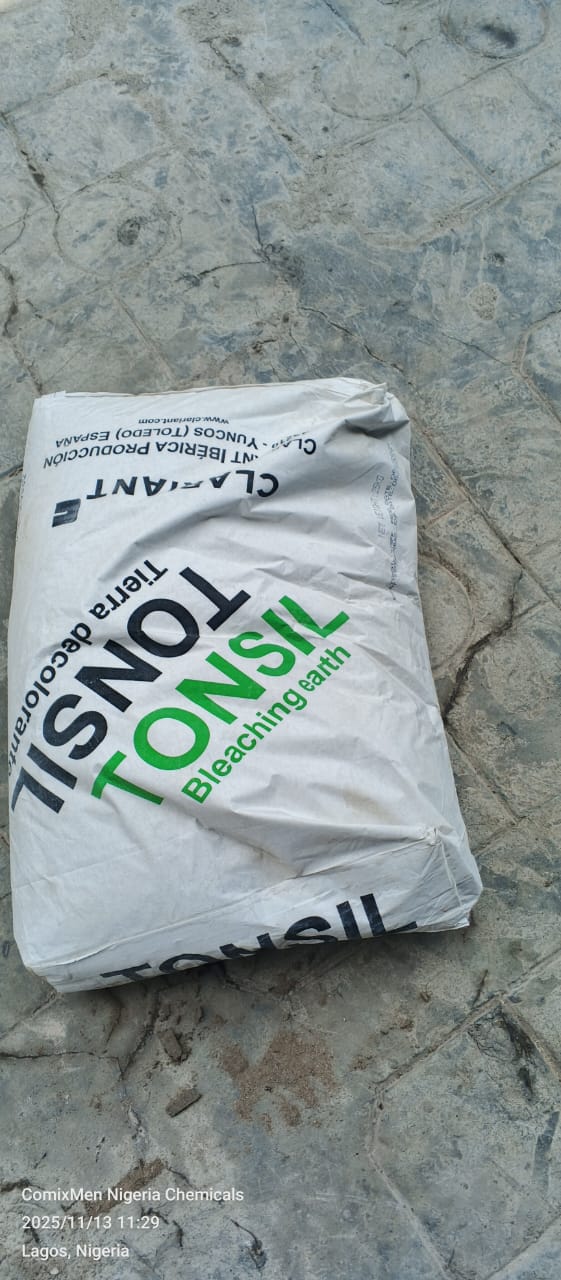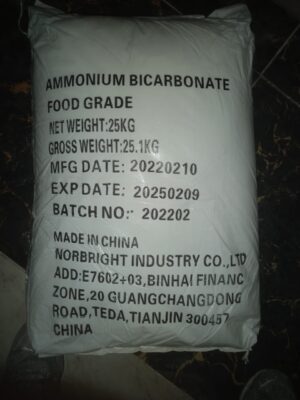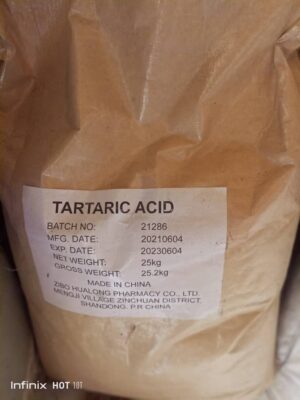calcium carbonate
Calcium carbonate (chemical formula CaCO₃) is a common chemical compound found widely in nature. Here’s a clear, quick overview:
What it is
A white, odorless powder or crystalline solid.
Occurs naturally in limestone, marble, chalk, coral, and shells.
Common uses
Antacid (reduces stomach acid)
Calcium supplement
Building materials (cement, lime, marble)
Industrial uses (plastics, paints, paper fillers)
Agriculture (soil pH adjustment—agricultural lime)
Key properties
Insoluble in water
Reacts with acids to produce carbon dioxide (the fizz when acid hits limestone)
Molar mass: 100.09 g/mol
Decomposes when heated → CaO (lime) + CO₂
Where it’s found in biology
Component of bones, teeth, shells of marine animals, egg shells.
₦12,000.00
Description
Calcium carbonate (chemical formula CaCO₃) is a common chemical compound found widely in nature. Here’s a clear, quick overview:
What it is
A white, odorless powder or crystalline solid.
Occurs naturally in limestone, marble, chalk, coral, and shells.
Common uses
Antacid (reduces stomach acid)
Calcium supplement
Building materials (cement, lime, marble)
Industrial uses (plastics, paints, paper fillers)
Agriculture (soil pH adjustment—agricultural lime)
Key properties
Insoluble in water
Reacts with acids to produce carbon dioxide (the fizz when acid hits limestone)
Molar mass: 100.09 g/mol
Decomposes when heated → CaO (lime) + CO₂
Where it’s found in biology
Component of bones, teeth, shells of marine animals, egg shells.
Calcium Carbonate — Detailed Chemical Profile
1. Chemical Identity
IUPAC name: Calcium trioxocarbonate
Chemical formula: CaCO₃
Molar mass: 100.0869 g/mol
CAS number: 471-34-1
EC number: 207-439-9
2. Structure & Bonding
Composed of a Ca²⁺ cation and CO₃²⁻ carbonate anion.
Carbonate ion geometry: trigonal planar.
Bonding within CO₃²⁻: resonance-stabilized, bond order ~1.33.
Solid exists mainly in ionic lattice structures with strong electrostatic interactions.
3. Polymorphs (Crystal Forms)
Calcium carbonate has three anhydrous polymorphs:
1. Calcite
Most stable polymorph at ambient conditions.
Crystal system: Trigonal (rhombohedral)
Density: ~2.71 g/cm³
Common in limestone, marble.
2. Aragonite
Metastable, forms in marine biological systems.
Crystal system: Orthorhombic
Density: ~2.93 g/cm³
Converts to calcite over geological timescales.
3. Vaterite
Least stable and rare.
Crystal system: Hexagonal
Density: ~2.54 g/cm³
Hydrated forms: monohydrocalcite (CaCO₃·H₂O) and ikaite (CaCO₃·6H₂O) occur in cold environments.
4. Physical Properties
Property Value
Appearance White powder or colorless crystals
Odor Odorless
Density 2.54–2.93 g/cm³ (polymorph dependent)
Melting point Decomposes before melting
Thermal decomposition ~825°C → CaO + CO₂
Solubility in water Very low (≈ 0.013 g/L at 25°C)
Solubility behavior Solubility increases in the presence of CO₂ (forms bicarbonate)
Hardness (Mohs) Calcite: 3
5. Chemical Properties
Reactivity
With acids:
CaCO₃ + 2HCl → CaCl₂ + H₂O + CO₂↑
With CO₂ and water: forms calcium bicarbonate
CaCO₃ + CO₂ + H₂O ↔ Ca(HCO₃)₂
With strong heat: thermal decomposition
CaCO₃ → CaO + CO₂
With ammonium salts: liberation of CO₂.
pH Behavior
Nearly neutral in water due to low solubility.
Acts as a buffer in natural waters, maintaining alkalinity.
6. Natural Occurrence
Found abundantly as:
Limestone, chalk, marble
Marine shells, corals, exoskeletons
Stalactites/stalagmites (calcite)
Geological formations shaped by sedimentation and biomineralization.
7. Industrial Production
Limestone mining and processing
Crushed, ground, and purified from natural sources.
PCC (Precipitated Calcium Carbonate)
Produced via:
Calcination: CaCO₃ → CaO + CO₂
Hydration: CaO + H₂O → Ca(OH)₂
Carbonation: Ca(OH)₂ + CO₂ → CaCO₃↓ (precipitate)
Allows control of particle size, morphology, and purity.
8. Applications (Technical)
Fillers: plastics, rubber, paper, paints
Cement & concrete industry
Pharmaceuticals: antacids, tablet excipients
Food additive: E170
Agriculture: soil pH adjustment, animal feed
Water treatment: neutralizes acids, remineralizes RO water
9. Safety & Handling
Generally recognized as safe (GRAS), low toxicity.
Dust may cause:
mild respiratory irritation
eye irritation
Avoid inhalation; use dust protection in industrial conte










Reviews
There are no reviews yet.